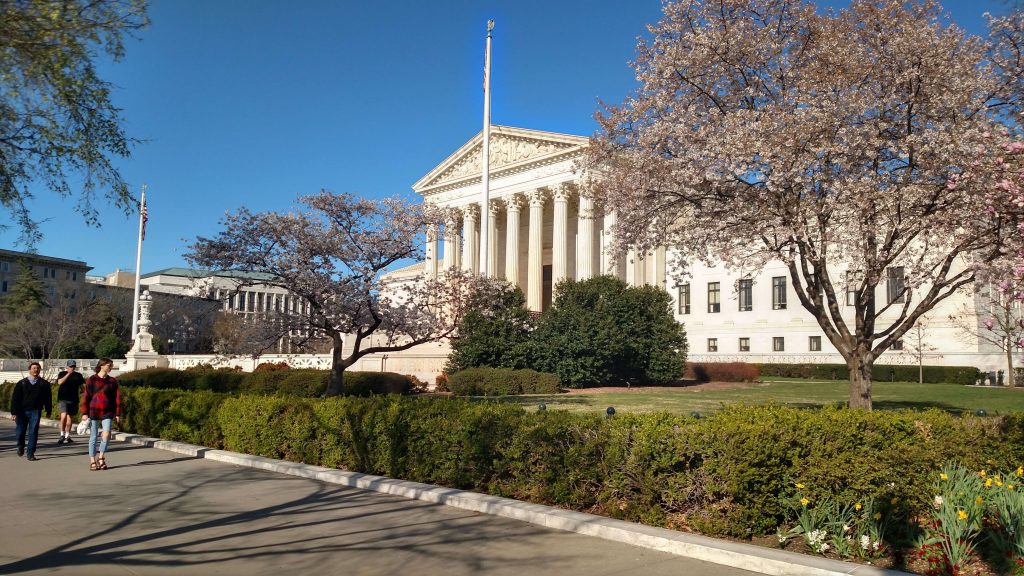
In Andy Warhol Foundation for the Visual Arts, Inc. v. Goldsmith, the United States Supreme Court is deliberating how to assess whether the appropriation of a work of art is protected under the fair use doctrine. This is a highly consequential case as the ruling is expected to have far-reaching implications for visual artists, writers and industries that rely on the works of others.
While in some instances it is reasonable to think of appropriation as a form of theft, when it comes to art, the subject of copyright laws begs a more nuanced interpretation of how artistic creation emerges. For example, how often is it that a work of art is fully original? Many times, works of art share elements that can easily be traced to the creation of an earlier artist. The more one thinks about it, it is only natural that as time passes by, the breadth of creative content out in the world grows larger and larger leading to either the conscious or unconscious decision of some artists to incorporate past ideas or traditions into their work. The important question is — where should we draw the line between a fair incorporation of past ideas and stealing? If the Supreme Court Justices decide to rule in favor of Goldsmith and use a more rigid interpretation of the fair use doctrine, this may lead to an increase in frivolous lawsuits over copyright law, as seems to be the case in the trial between Ed Sheeran and Marvin Gaye. Nevertheless, the Goldsmith case is complex and its facts deserve proper examination.
Lynn Goldsmith photographed the music performer Prince in 1981 as part of her job at Newsweek magazine and allowed the Vanity Fair magazine to use the photograph in one of its 1984 editions in exchange for a $400 license fee. The picture used in the Vanity Fair article was edited by artist Andy Warhol in his distinct rebellious style, heavily reliant on pencil illustrations and silkscreen prints. Warhol continued to create and license illustrations of Prince using Goldsmith’s portrait without notifying Goldsmith.
Defense lawyer Lissa S. Blat and Prosecutor Roman Martinez are addressing the question of whether Warhol’s appropriation of Goldsmith’s picture constituted fair use, so the real question for the Supreme Court is how to determine fair use. When assessing fair use, courts have historically asked four questions: Is the new work transformative in the sense that it adds a new message and meaning vis-à-vis the original work? What is the level of transformation? What is the type of work involved? Does the new work negatively impact the market of the original work?
The disagreement between the two parties, as exemplified by Martinez and Blatt’s claims during oral arguments, seems to be over whether the transformative question is relevant for a fair use analysis. Martinez, defending the Andy Warhol Foundation, stressed that the transformative analysis is crucial and that neglecting it “would make it illegal for artists, museums, galleries, and collectors to display, sell, profit from, maybe even possess a significant quantity of works.” Arguing in favor of Goldsmith, Blatt raised serious concerns about the subjective nature of the transformative test and the larger effects of adopting such a standard.
Disregarding the transformative criterion for the fair-use analysis seems like a bad idea. Eleven copyright law professors submitted an amicus brief to the Supreme Court for the Goldsmith case arguing for the inclusion of the transformative test for an “orderly development of copyright law … that serves the public interest.” When asked by the Harvard Law Review to comment on the implication of the case, copyright professor Rebecca Tushnet discussed how interaction with copyrighted material is crucial to the development of the arts and to societal innovation at large given that “copyrights have never been pure monopoly rights.” Martinez stressed that precedent works in his client’s favor and flagged that “a ruling for Goldsmith would strip protection not just from the Prince Series but from countless works of modern and contemporary art.”
Martinez and the copyright professors make a good case. Apart from the extreme unpleasantness of being involved in a frivolous trial, this may also deter artists from engaging in production of art. Moreover, if the ruling goes against the Warhol foundation, it will most likely be the case that this will disproportionately affect emerging artists who lack the necessary financial means to participate in legal suits.
Blatt’s arguments appeal to those concerned with how easily manipulated the transformative test can be. For example, Blatt argues that if someone merely adds a smiley face to someone else’s painting, it would be unclear whether that would be transformative enough to count as fair use. While that may be the case in theory, I argue that in practice the transformative test appeals to common sense and that there is more intersubjective agreement on whether a piece of art is transformative than one would initially expect. Additionally, getting rid of the transformative test altogether does not seem to help determine fair use. The reason why the test was accepted in the first place was to help offer more context when interpreting copyright laws.
While the issues of copyright and licensing and how to properly protect artists against fraudulent reproduction of their works while still encouraging artistic innovation are complex, getting rid of the transformative criterion in the interpretation of what constitutes “fair use” may create more problems than it solves. Regardless, the decision is highly awaited by many who look to the Supreme Court for more clarity on how to understand and apply copyright laws.


